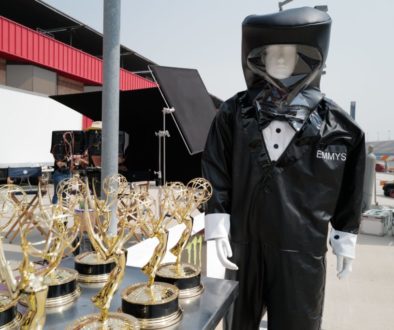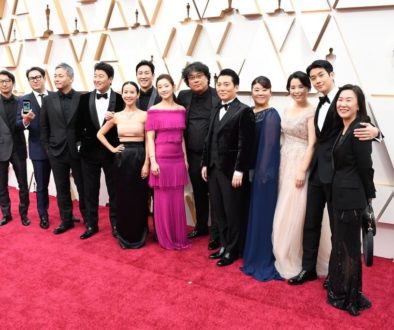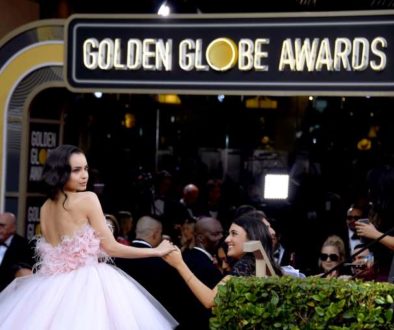TV Movies and Other Accidental Horrors
Sometimes I tell friends to watch things that are awful. It’s harder if the only recommendation I have is, “No, you can’t imagine how bad it is until you see it.” It gets more awkward if it’s something I found during one of my down-the-rabbit hole Netflix fugue states, where I snap out of it the next day and realize I’ve watched seven movies, each worse than the last, until I nearly rewatched Blood of Beasts, a “Viking” Beauty and the Beast story where the only part that ever stays with me is where she offers to help her bear-suit captor wash up by pressing a damp washcloth gingerly to his shoulder three times, the end. (Actual scene.)
But sometimes a movie just needs to be talked about – say, Dancing at the Harvest Moon. Officially, it’s a movie about a divorcee who returns to her hometown hoping to reconnect with her first love. He’s dead, so instead she restores the dance hall they used to frequent and makes out with his son. (Actual plot.)
For its production design alone I recommend it, because if you have 90 minutes, this movie has 90 lamps:
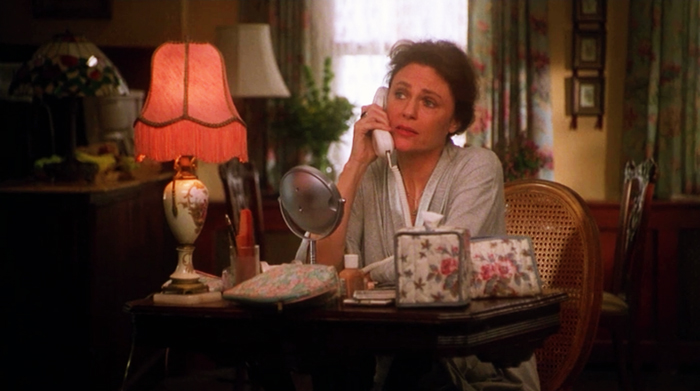
(It also has 90 quilted cosmetic bags made from the same fabric as the drapes.)
I thought at first I would just take ten screencaps that highlighted the supreme awkwardness that permeates this movie like peppermint oil in a Celestial Seasonings outlet. The screencaps I actually took turned into a surprising and unsettling example of how the camera’s gaze is, at heart, an instrument of suspense – it builds nothing else so efficiently as dread.
So, let’s look at how to turn a romantic TV movie into a Lynchian horror flick in ten screencaps or less.
Again, this is a romance in which the ugliest dance hall in the world is lovingly restored by a woman who takes breaks from working hard to make out with the son of the man she used to be in love with (she waits a really long time to mention this, in the time-honored tradition of every other story that hinges on a single communication withheld for plotcakes), and after many weirdly-contemporary flashbacks to her youth and some completely unnecessary dancing by two people who should never, ever dance, finds happiness with him.
What I ended up with is a chronological series of screencaps in which a woman comes to a creepy small town, becomes the target of the local young serial killer who masquerades as a wholesome young man, and in a third-act twist, is herself a serial killer! Dig it.
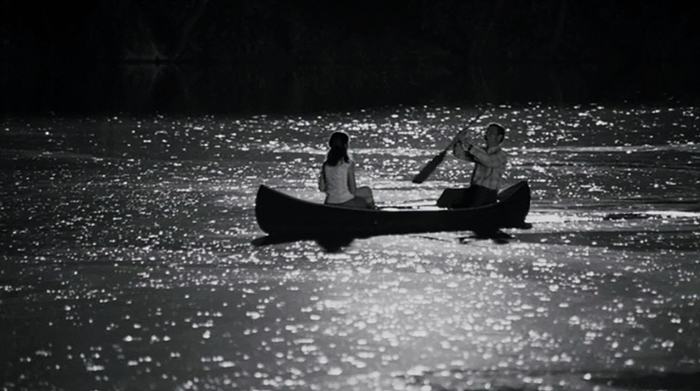
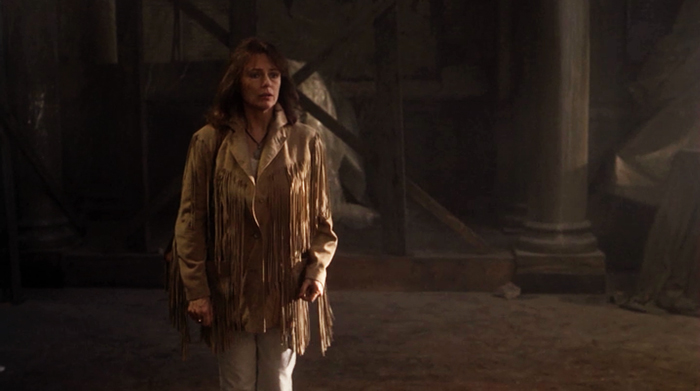
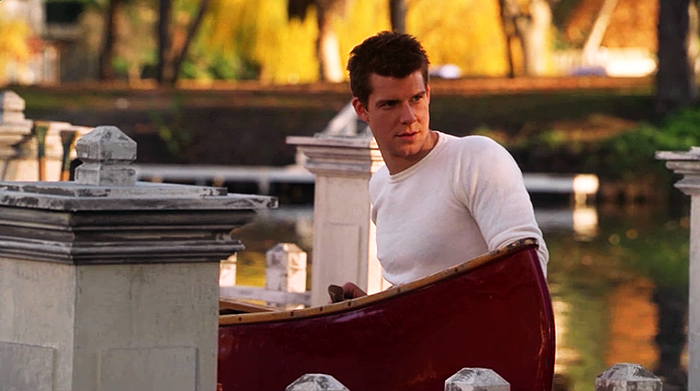
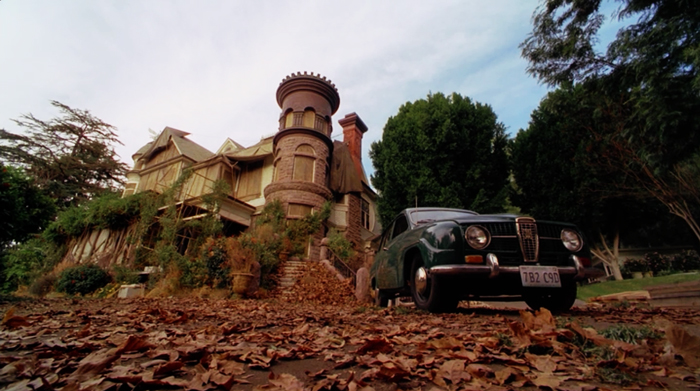
Actual shot from the film. You tell me how this isn’t straight out of a horror movie.
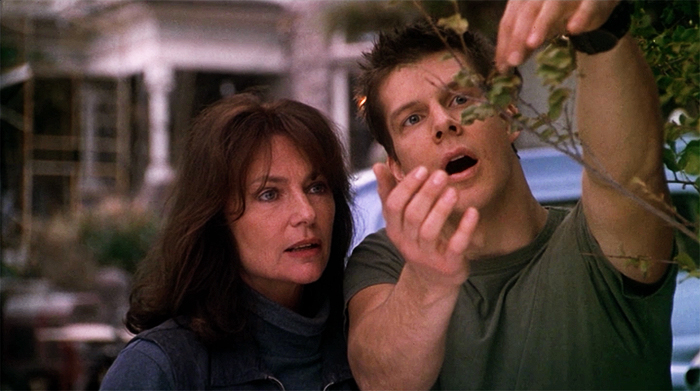
(He’s showing her a butterfly. They talk about feeling misplaced and vanishing. Actual dialogue.)
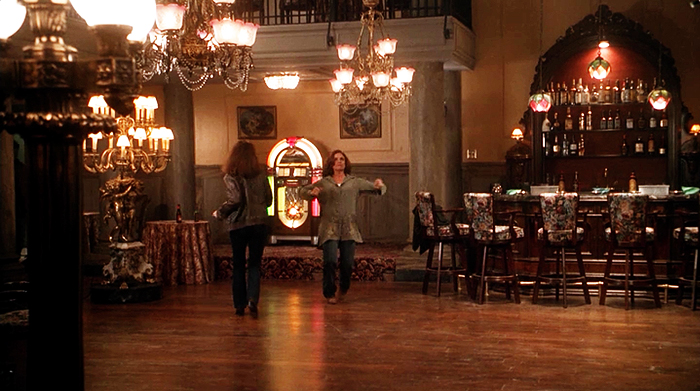
I just need to stop here and remind everyone that this is AFTER the loving restoration of the dance hall. All these choices are, therefore, to be read as deliberate design decisions. I just want to stress this.
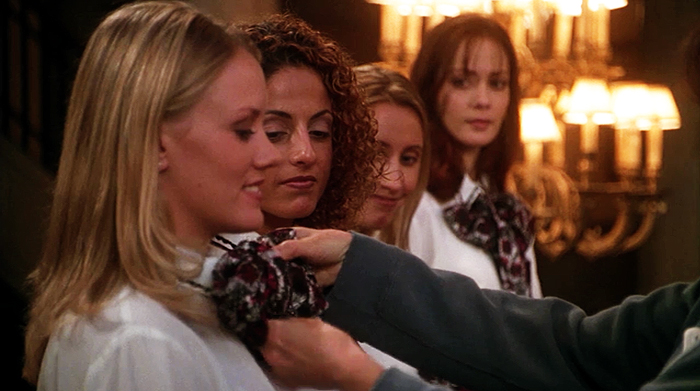
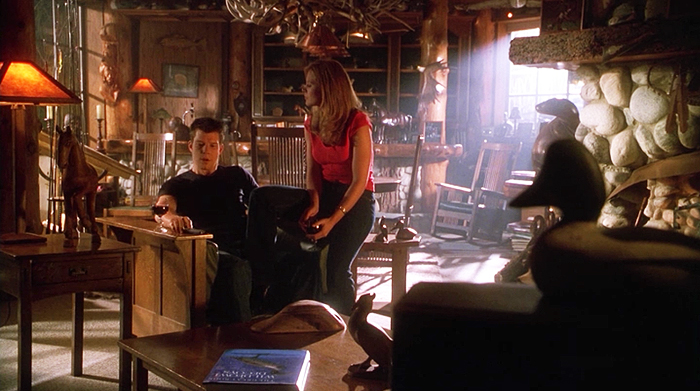
The murderer, at home in his antler-house with suspiciously skull-like fireplace surround, isn’t happy with the young lady; she’s never seen again. (Actual situation.)
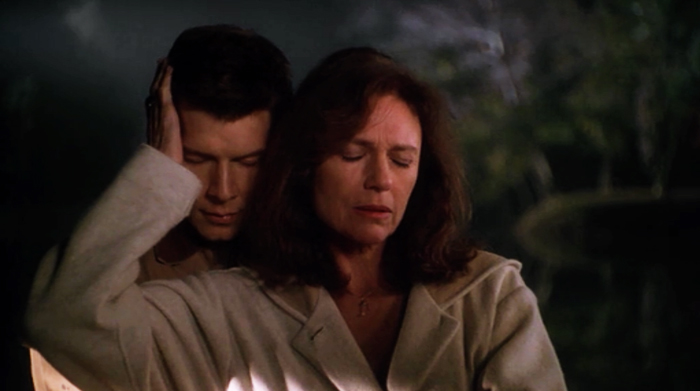
It’s okay, though; this floral-print enthusiast is going to take care of everything.
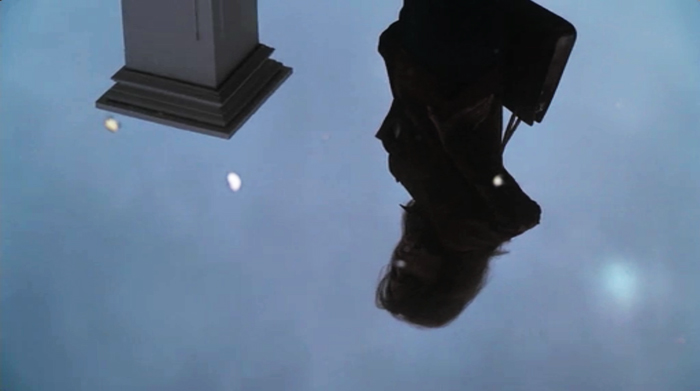
Sweet dreams, drowned murderer.
While it’s hard to say I recommend this movie (how can you recommend something with that dance hall as a major set? I’m not a monster!), I do find it’s a lot easier to think of this movie fondly now that I know the dark, horrific secrets it holds. Maybe we’ll just all pretend together, and no one ever has to see it again. (Unless I told you you should see it, then you should still see it so we can talk about the dancing, because I really need to talk to someone about that dancing.)

